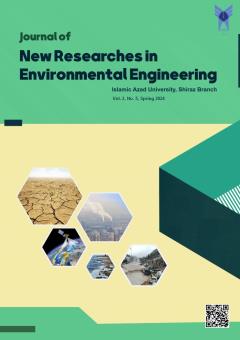شناسایی و اولویتبندی مولفههای موثر بر بهرهگیری از فضاهای زیرزمینی به منظور توسعه پایدار فضاهای عمومی شهری با استفاده از روش تاپسیس (مطالعه موردی: شهر تهران)
الموضوعات : Environmental crises
محمدمهدی صفایی
1
![]() ,
محمد سعید ایزدی
2
,
علی افشار
3
,
حمید رضا سیاهویی
4
,
محمد سعید ایزدی
2
,
علی افشار
3
,
حمید رضا سیاهویی
4
1 - گروه معماری، واحد بینالملل کیش، دانشگاه آزاد اسلامی، جزیره کیش، ایران
2 - استادیار گروه طراحی شهری، دانشکده هنر و معماری، دانشگاه بوعلی سینا، همدان، ایران.
3 - موسسه آموزش عالی اقبال لاهوری، مشهد
4 - گروه معماری . دانشگاه پیام نور . سازمان مرکزی .ایران
الکلمات المفتاحية: فضای عمومی شهری, توسعه پایدار, فضای زیرزمینی, روش تاپسیس, شهر تهران,
ملخص المقالة :
مقدمه: یکی از مشکالت عمده شهرهای امروز، افزایش جمعیت و رشد سریع آنها و کاهش سرانه کاربری های شهری است که به طور نامحسوسی تعامالت اجتماعی را کاهش داده است. شهرسازی زیرزمینی میتواند به ارتقای پایداری و تاب آوری شهری کمک کند. این فضاها می توانند به ا یجاد شهرهای فشرده، افزایش تراکم و جلوگیری از گسترش بیرو یه شهر کمک کنند. هدف تحقیق شناسایی و اولویتبندی مولفههای موثر بر توسعه پایدار فضاهای زیرزمینی به عنوان بخشی از فضاهای عمومی شهری در تهران و ۶ منطقه منتخب بود.
مواد و روشها: تحقیق از نوع کاربرد ی بود که به روش ترکیبی و در 4 گام انجام شد. ابتدا با مطالعه عمیق فهرستی از مولفهها و عوامل موثر تهیه شد و سپس از 23 نفر خبره به منظور ارزیابی و رتبهبندی عوامل و گزینهها استفاده شد. روش نمونهگیری از نوع هدفمند بود که تا رسیدن به نقطه اشباع نظری ادامه یافت. روش تحلیل عاملی تاییدی برای برازش مدل استفاده شد. بدین شکل که از مدل معادالت ساختاری به روش حداقل مربعات جزئی )PLS )بر اساس نرمافزار SmartPLS نسخه 2 استفاده گردید. همچنین، تکنیک تاپسیس برای نرمالیزه کردن، بی مقیاسسازی و در نهای ت رتبهبندی بکار گرفته شد.
نتایج و بحث: نتایج نشان داد که مولفههای موثر شامل 4 عامل اصلی و 20 عامل فرعی بودند و تمام مولفه در بخش شرایط علی )عوامل اصلی و فرع ی( از ضریب آلفای کرونباخ و مقدار پایایی ترکیبی مورد تایید برخوردار )088/0 )و مقدار میانگی ن مقادیر اشتراکی )93 /0 )آن بدست آمد. مقدار GOF R2 بودند. میانگین مقادیر ضرایب معادل ) 382 /0 )بدست آمد که نشان از برازش قوی مدل نهایی پژوهش است. در نهایت، گزی نه برتر مجموعه فرهنگی آزادی )8۶1/0 )و پس از آن زیگذر چهارراه ولیعصر )774/0 )انتخاب شدند. همچنین مجموعه تفریحی باملند و موزه قرآن نیز به ترتیب با ۶۶1 /0 و 573/0 رتبه های آخر را اخذ کردند. نتیجهگیری: استفاده و توسعه فضاهای زیرزمینی به عنوان فضاهای عمومی شهر ی با چالش هایی مواجه است. این مشکالت شامل عدم کارایی و رونق، افزایش جرمخیزی و عدم امنیت، دسترسی محدود در حوادث، و هزینههای اضافی برای تهویه و روشنایی است. همچنین، نگرش منفی جامعه نسبت به فضاهای زیرزمینی و مشکالتی در برقراری ارتباط و مکان یابی از دیگر محدودیت ها هستند. با بهبود طراحی این فضاها و پذیرش افکار عمومی، استفاده از معماری زیرزمین ی می تواند به حل مشکل کمبود فضاها ی عمومی در تهران کمک کند و استقبال بیشتری را به دنبال داشته باشد.


